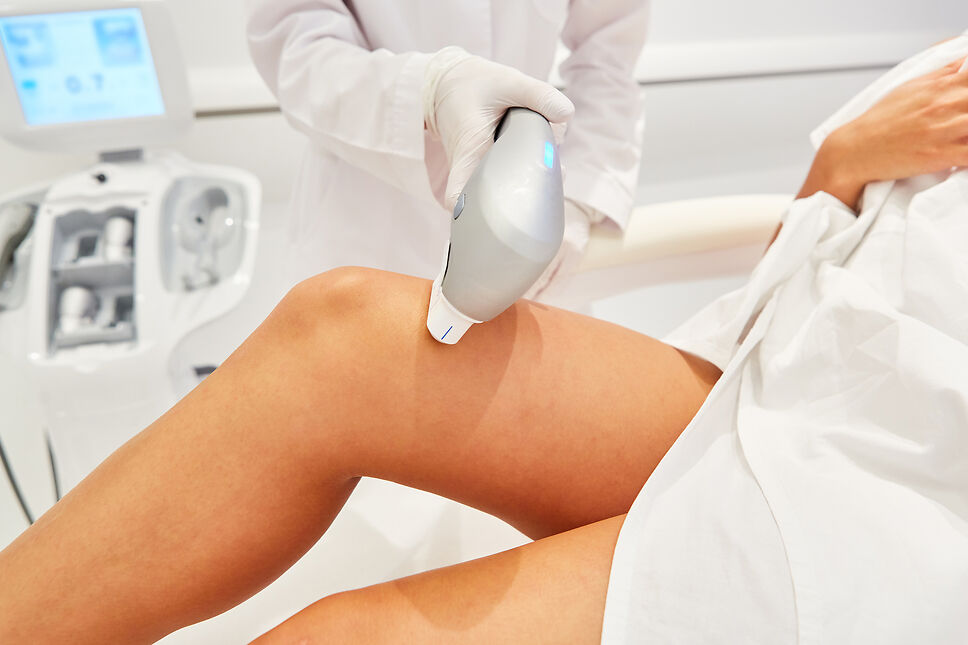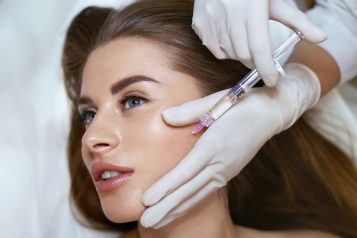As we age, our skin undergoes various changes, one of the most noticeable being a loss of firmness and elasticity. Skin laxity, along with wrinkles and textural irregularities, are common signs of aging that many individuals seek to address. But what exactly causes this decline in skin quality, and what can be done to combat it without resorting to invasive surgical procedures?
 Photo Credit: Courtesy of Robert Kneschke/Shutterstock
Photo Credit: Courtesy of Robert Kneschke/Shutterstock
Causes of Skin Laxity and Loss of Elasticity
The primary culprits behind skin laxity and loss of elasticity are the gradual decrease in collagen and elastin levels in the skin. Collagen and elastin are essential proteins responsible for maintaining the skin’s structure and firmness. Unfortunately, as we age, the production of these proteins decreases while their rate of breakdown increases. Factors such as UV exposure, genetics, smoking, and environmental pollution accelerate this process. It is estimated that we lose about 1% of the collagen in our skin every year after the age of 20.
Non-Invasive Methods for Tightening Loose Skin
Non-invasive skin tightening procedures offer a promising solution for rejuvenating aging skin without the need for surgery. Among these methods, high-frequency ultrasound and radiofrequency technologies have shown significant efficacy. One standout device in this realm is Sofwave, which utilizes high-frequency ultrasound technology to heat tissue just below the skin’s surface. This process stimulates collagen and elastin production, leading to skin tightening and improved skin quality.
Surgical vs. Non-Surgical Skin Tightening Procedures
While surgical procedures involve the removal of excess skin, non-invasive treatments focus on augmenting collagen and elastin to tighten and lift the skin. While surgery may be the most effective option for severe laxity, non-invasive treatments like Sofwave offer a viable alternative for those who may not be surgical candidates or prefer a non-surgical approach.
Targeted Areas for Skin Tightening Treatments
Skin tightening treatments are commonly sought after for various areas of the body beyond just the face and neck. Popular treatment sites include the chest, abdomen, thighs, buttocks, arms, backs of the hands, and the skin above the knee.
Combining Skin Tightening Procedures with Other Treatments
Skin tightening procedures can be complemented by other cosmetic treatments to enhance results further. Even individuals undergoing surgical tightening may benefit from treatments like Sofwave to improve skin quality and prevent future laxity.
Sofwave: The Revolutionary Non-Invasive Solution
Sofwave stands out as a leading non-invasive device for skin tightening and rejuvenation. It utilizes high-frequency focused ultrasound waves to stimulate collagen and elastin production, leading to tighter, more youthful-looking skin. With minimal downtime and a focus on safety and efficacy, Sofwave offers a compelling option for those seeking to address mild to moderate skin laxity.
Key Questions About Sofwave
- Timeline for Results: Patients typically notice improvement after a few weeks, with optimal results expected around 8 to 12 months post-treatment.
- Ideal Candidates: Ideal candidates for Sofwave have mild to moderate skin laxity, although it can also be used preventatively in younger individuals to ward off signs of aging.
- Benefits: Sofwave reduces and prevents fine lines and wrinkles, improves skin laxity, and enhances overall skin quality by stimulating collagen and elastin production.
- Safety Profile: Sofwave is considered safe with minimal risks, including temporary redness, swelling, or discomfort. Serious complications are rare when administered by an experienced provider.
Understanding the causes of skin laxity and exploring non-invasive solutions like Sofwave can empower individuals to address signs of aging effectively and confidently, without the need for surgery. Whether seeking to tighten facial contours or rejuvenate skin in other areas of the body, non-invasive skin tightening procedures offer a safe, effective, and convenient option for achieving a more youthful appearance.
For more information, visit Dr. Brian A. Levine's social media:

























